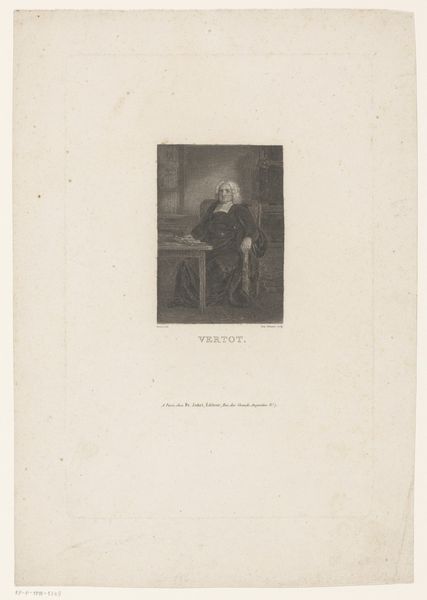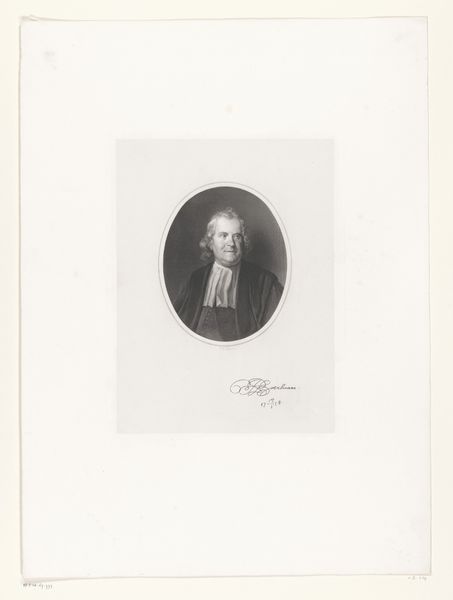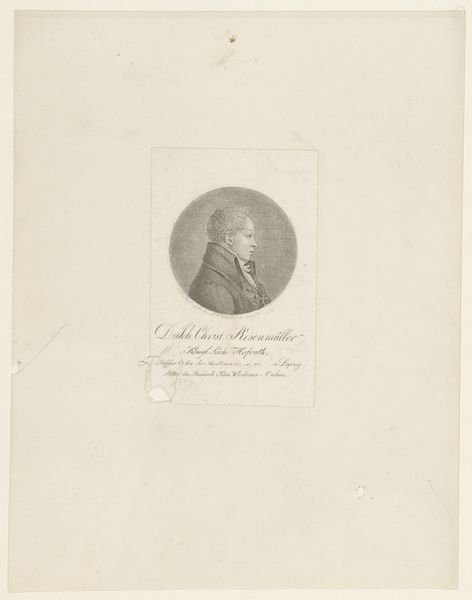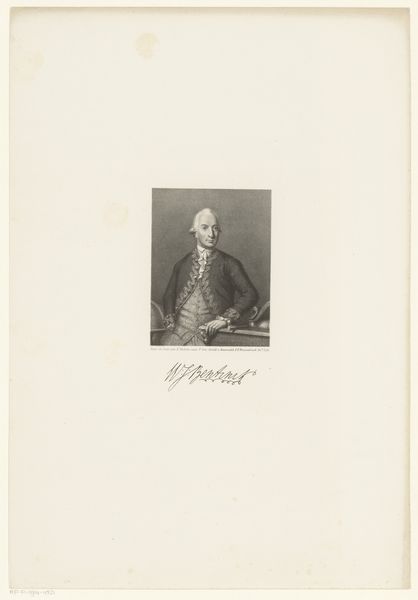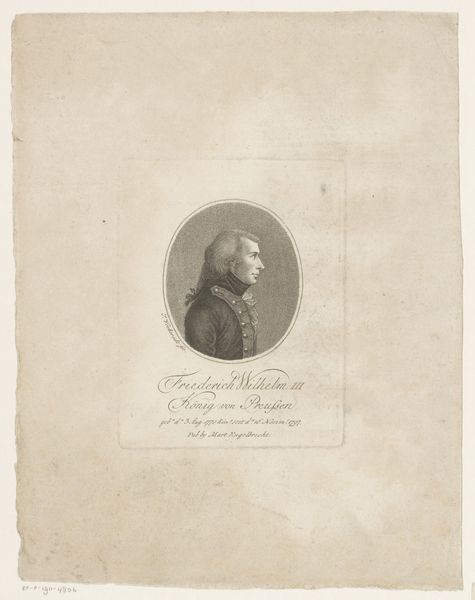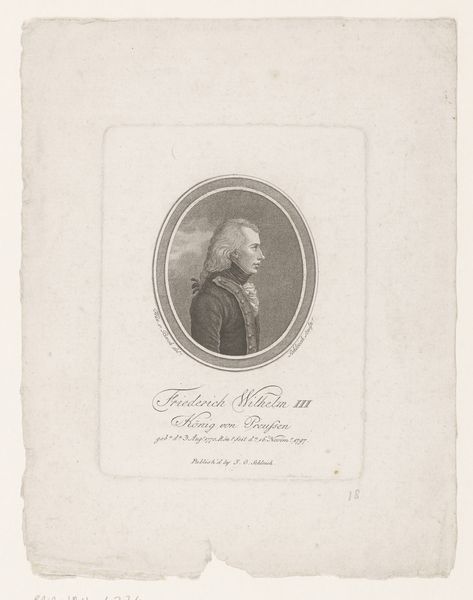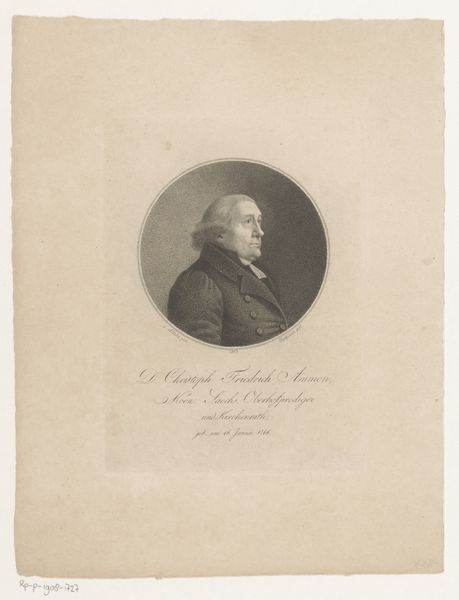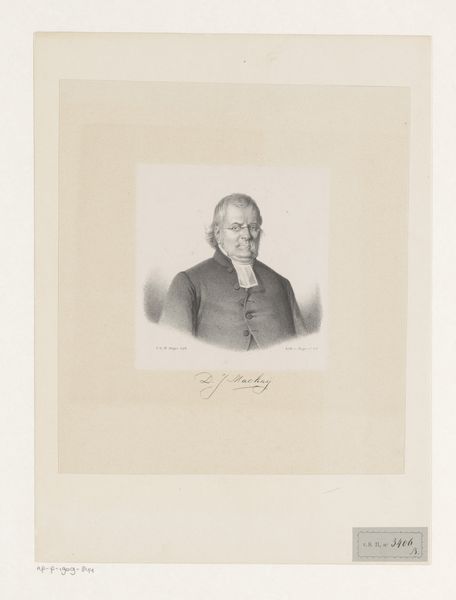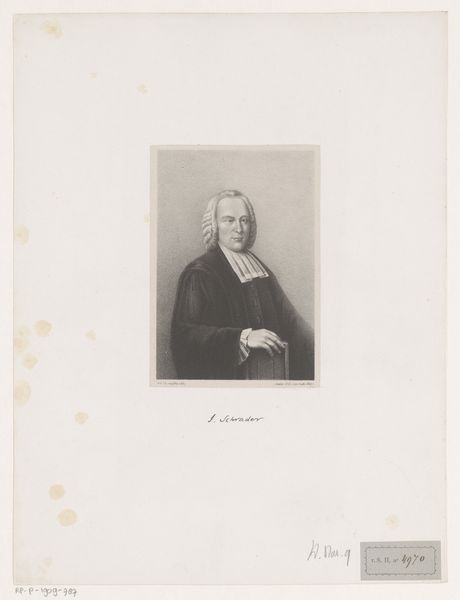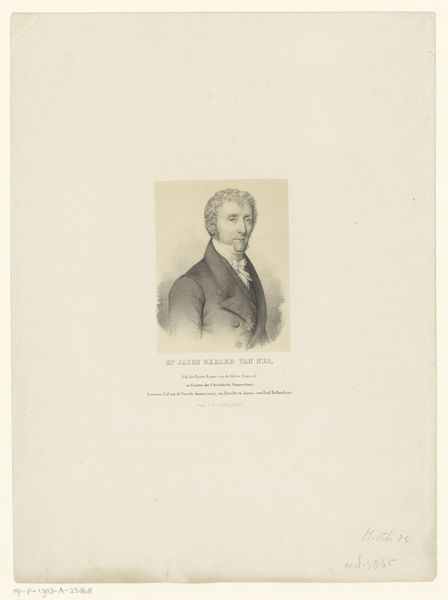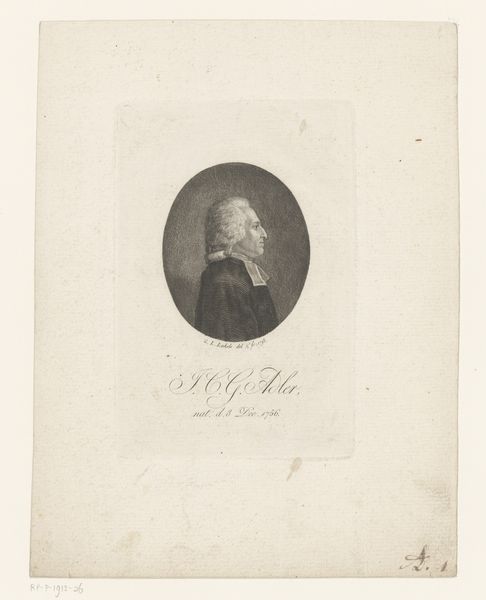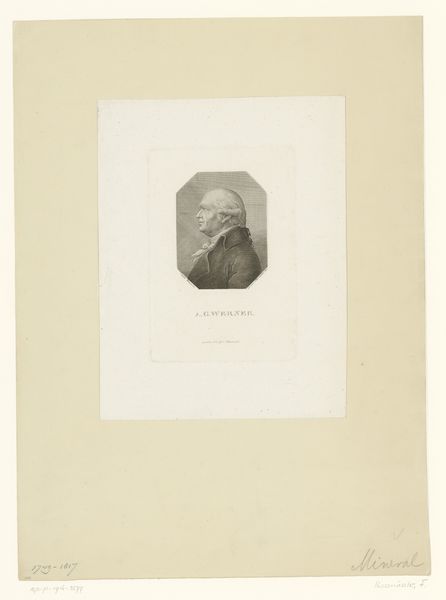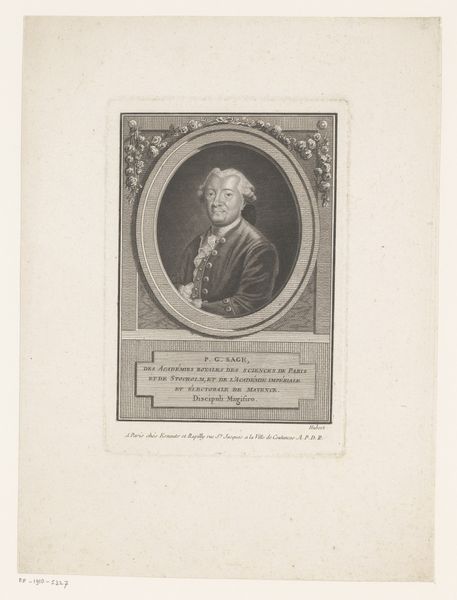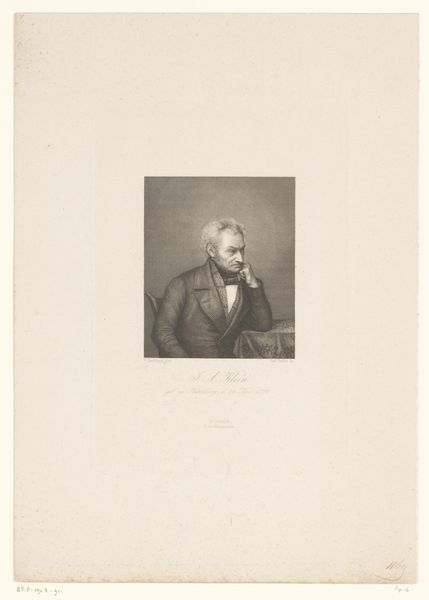
print, paper, engraving
#
portrait
#
ink paper printed
# print
#
paper
#
romanticism
#
history-painting
#
engraving
#
monochrome
Dimensions: height 304 mm, width 227 mm
Copyright: Rijks Museum: Open Domain
Curator: This is "Portret van John Abernethy Esqr." It's an engraving done by Edward McInnes, created in 1842. It presents a striking figure against a backdrop that suggests both domesticity and grandeur. Editor: The immediate feeling is one of constrained power. The monochrome palette gives a stark feel, doesn’t it? The texture of the engraving almost seems to mimic the fabrics depicted, the velvet-like jacket and the crisp paper on the table. Curator: Precisely. Abernethy was a famous surgeon and medical educator in London. Portraits like these were commissioned to cement reputation, shaping the perception of figures like Abernethy in the public eye, aligning him with ideals of science and enlightenment. Editor: Note the table and documents, the suggestion of his labor and status. I find myself drawn to the textures reproduced through the printmaking. What sort of engraver was McInnes? What was his relationship to the subject? These portraits functioned as commodities in a print market—affordable for wider circulation than an original painting. Curator: McInnes was known for his portrait engravings, often based on paintings by leading artists of the time. This work disseminated Abernethy's image beyond the elite circles. Consider its role in shaping medical authority. Engravings allowed for a democratization of imagery, making the visage of learned figures accessible. Editor: Yes, democratizing images through reproductive techniques. But it also abstracts labor. We see Abernethy presented in such a mannered pose, but how different his labor was from McInnes, reproducing and re-presenting it through labor-intensive printing? How do these processes enhance or obscure inherent class divisions? Curator: A fascinating point about the layers of labor involved in its creation and distribution. It underlines the complex networks through which reputation was built in the 19th century. Editor: Absolutely. The artwork really highlights how printed portraits themselves are products—material objects bearing social weight. Thinking about paper, ink, and the press gives me another way into understanding its historical moment. Curator: I will now consider engravings a bit differently; thank you for drawing that out for us today. Editor: My pleasure, seeing both the means and the meaning only deepens our appreciation.
Comments
No comments
Be the first to comment and join the conversation on the ultimate creative platform.
